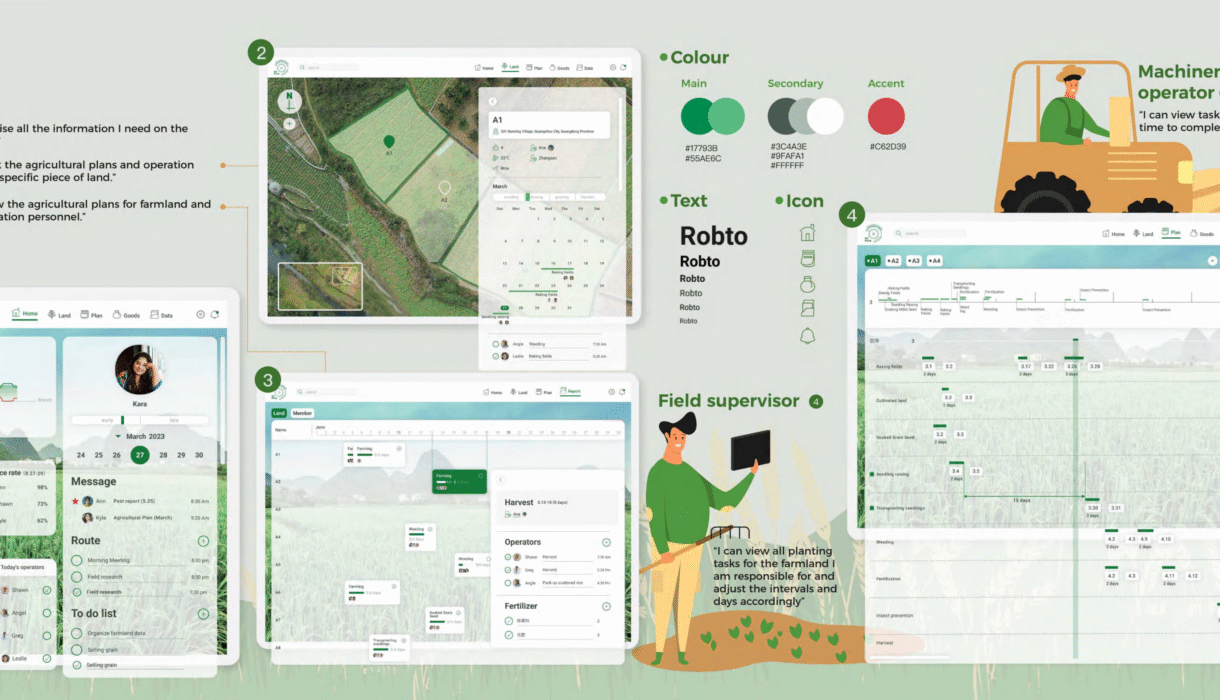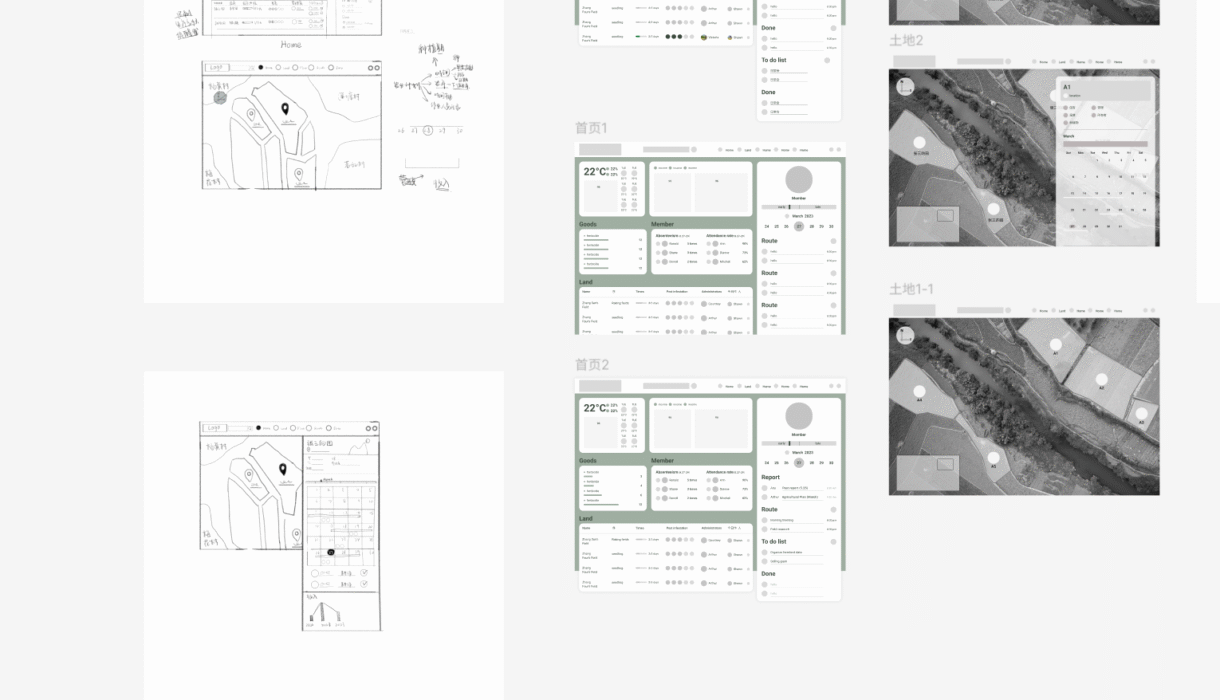Great Planter
Integrated management platform of agricultural machinery cooperatives
Overview
This is a multi-port management platform, helping agricultural cooperatives improve management efficiency
- To meet the manager for staff and equipment deployment
- Land block management, clear understanding of land and commodity conditions.
- Improve the eciency of communication between employees and clarify the assignment of tasks.
Tool

Background
Agricultural mechanization cooperatives in China
In the past, farmland in China was mostly fragmented and individually managed by smallholder farmers. Due to generally low farming skills and limited scale, the level of agricultural mechanization remained between 65% and 75% for a long time.
In recent years, however, the emergence of agricultural machinery cooperatives has transformed this landscape. These cooperatives lease and centrally manage land from farmers, adopting mechanized farming methods to significantly improve production efficiency. Alternatively, farmers can also purchase specific mechanized services from these cooperatives according to their needs, such as mechanical sowing or harvesting.
Research
Field visit -- Observation
I conducted a field visit to a nearby agricultural machinery cooperative and learned that they intended to establish a unified management system. However, due to the poor usability of the system interface, it has largely been abandoned.
Since this was an entirely unfamiliar field to me, I accompanied the staff to the farmland to observe their operations and understand the planting process and required machinery.
I found that each plot of land goes through several stages — leveling, sowing, growth, and harvesting, requiring different types of machinery such as tractors and transplanters. Notably, due to the still limited level of mechanization, significant manual labor is still required during certain stages of planting.
Field visit -- Interview
Through interviews with workers, agricultural machinery operators, land managers, and supervisors within the organization, I identified their main pain points and expectations regarding the system.
Current system analysis
The cooperative already has its own management system with some basic functions. However, it lacks visualized design features and requires a large amount of manual data entry, making it far from user-friendly.
Analysis and prototype
system analysis -- system mapping, bussiness canvas and service blueprint
Since this is a system management software, I first used system mapping to analyze how different stakeholders interact and exchange information with the system. Then, through a service blueprint analysis, I examined how information flows between the frontstage and backstage processes at each stage of cultivation. Based on this analysis, I developed preliminary information architecture for different user roles, including supervisors, land managers, and workers.
Prototype -- low-fidelity and high-fidelity mockup
I designed low-fidelity interfaces and high-fidelity prototypes for desktop, tablet, and mobile platforms, aligned with the devices most commonly used by different stakeholders.

